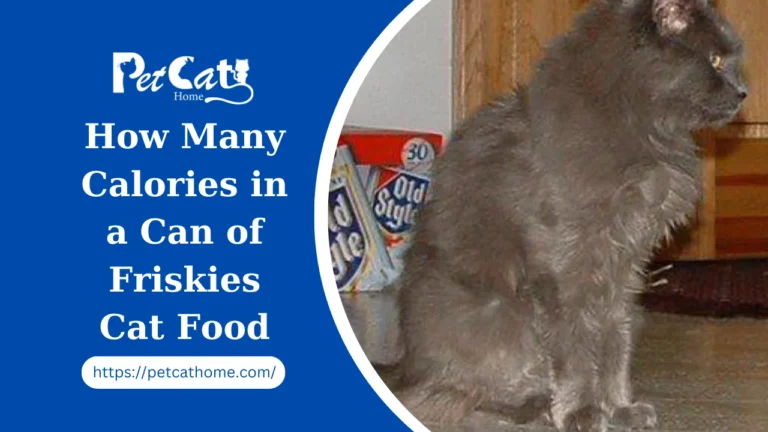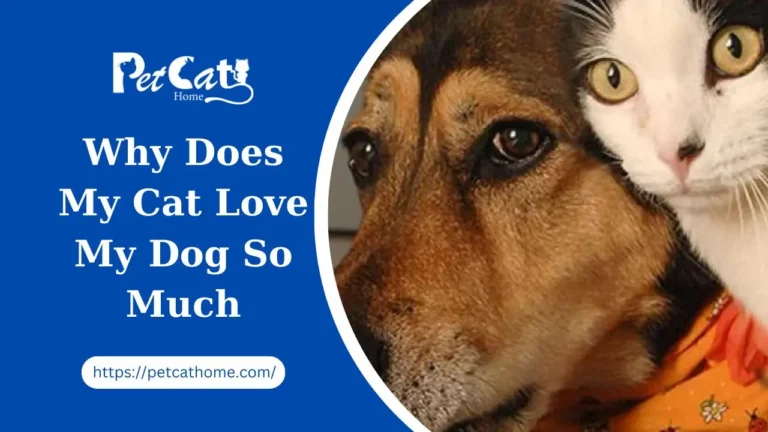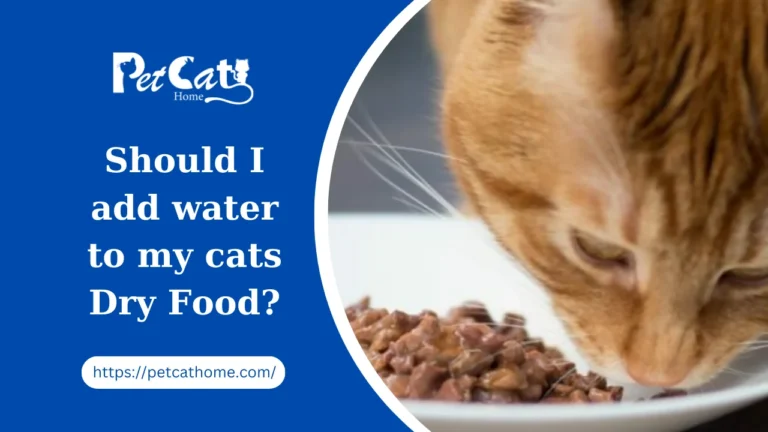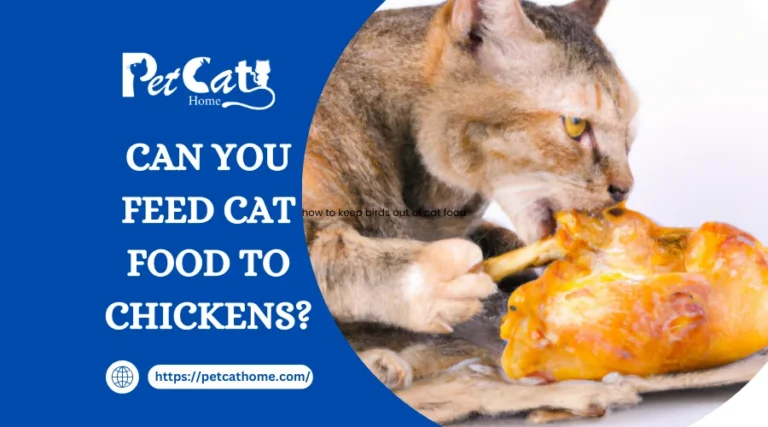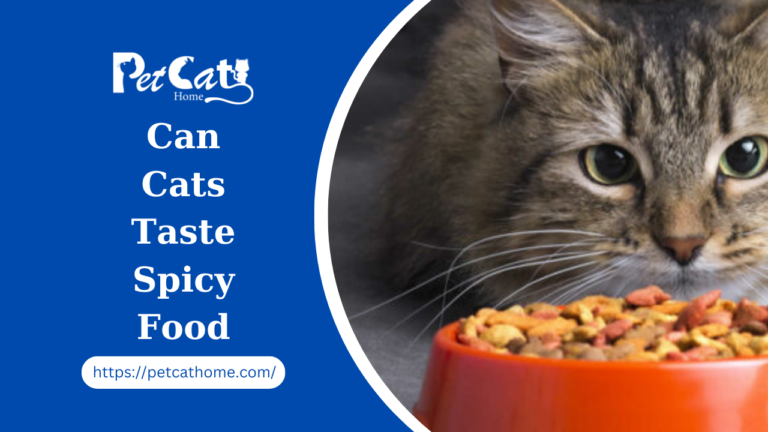When Can My Kitten Eat Cat Food
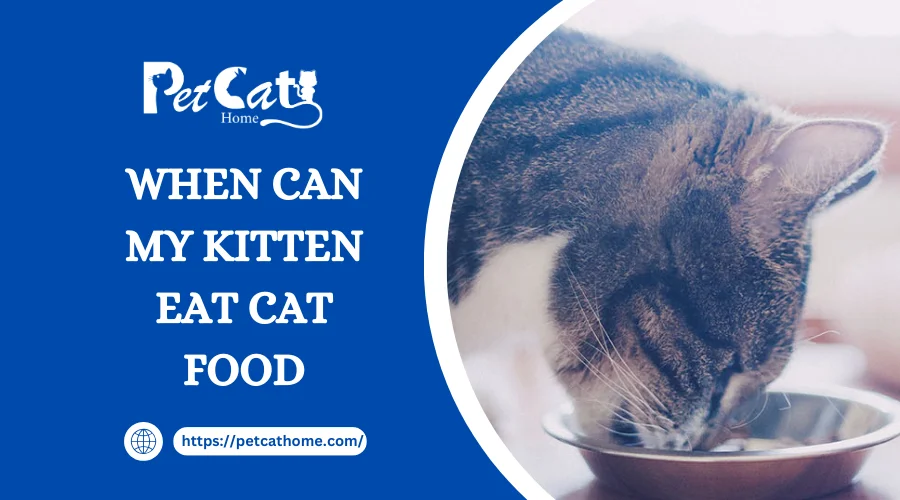
It’s a joyful moment to welcome a new furry pet into your home, but there are a lot of responsibilities involved, particularly concerning feeding them. “When can my kitten eat cat food?” is a frequently asked question among cat owners. Knowing when to give your kitten their first meal is essential to their development and well-being. We’ll explore the elements that decide when your kitten should start eating eat cat food in this extensive guide, making sure they get the nutrition they require for a healthy life.
Understanding kitten development is crucial before deciding when to start feeding them. Between the ages of four and six weeks, kittens normally begin to wean themselves off of their mothers’ milk. They started to experiment with solid meals during this period, moving from a diet that is exclusively milk-based to one that includes solid-eat cat food.
Signs Your Kitten Is Ready for Cat Food
Although knowing the approximate age range at which to introduce cat food is useful, each kitten is unique, so it’s important to pay attention to their indications. The following indications suggest that your kitten could be prepared to switch to eat cat food:
1. Chewing Behavior
Kittens may exhibit an interest in chewing behaviours when they begin to explore solid foods. They could try to nibble on items or even try to sample the household’s senior cats’ meals.
2. Decreased Interest in Nursing
Kittens may become less interested in nursing from their mother as they get more inquisitive about solid foods. Their actions are a clear sign that they are prepared to begin eating cat food.
3. Healthy Weight Gain
It’s important to keep an eye on your kitten’s weight gain at this time. A healthy indication that your kitten is ready for cat food is if they are reaching their growth milestones and gaining weight steadily.
4. Curiosity About Food
When a kitten is ready to switch to cat food, they could show interest in what you’re eating. When you’re cooking, they can want to explore your plate or show interest.
Introducing Cat Food to Your Kitten
It’s crucial to gradually introduce eat cat food to your kitten after you’ve noticed the telltale indications. Making sudden nutritional changes can be uncomfortable for your kitten, so it’s important to go carefully. Take these actions:
1. Choose the Right Cat Food
It’s critical to choose a premium cat food that fulfils the nutritional requirements of your kitten. For optimal growth and development, select products that are specially designed for kittens, as they need a diet high in protein, healthy fats, vitamins, and minerals.
2. Start with Mixtures
Start by combining a tiny amount of wet food or milk replacer with your kitten’s regular diet. Over a few days, progressively add more cat food to the mixture so that your kitten can get used to the new flavour and texture.
3. Monitor Your Kitten’s Response
When cat food is introduced to your kitten, observe how it reacts. Keep an eye out for indications of upset stomach or unwillingness to eat. Slow down the changeover process and, if needed, see your veterinarian if you observe any unfavourable reactions.
4. Provide Fresh Water
Make sure your kitten always has access to clean water, particularly while switching to cat food. It’s critical for their general health and digestion that they be well-hydrated.
Is Your Kitten Ready for Adult Cat Food?
There’s much more to feeding your kitten healthfully than just putting new eat cat food in a clean bowl. The nutritional requirements of your cat will alter as their body matures from adolescence to adulthood. During these vital growth stages, your kitten will develop into a robust, healthy adult cat with the support of proper nutrition.

Cats and kittens have very diverse nutritional needs, so it’s important to provide your pet with premium age-appropriate food. Everything you need to know about feeding your growing kitten and the differences between kitten and eat cat food is provided here.
What to Feed a Kitten at Each Stage of Development
Rapid Growth Stage: 2 to 6 Months
Kittens go through a period of fast growth after being weaned, which lasts until they are six months old. They require a premium, well-balanced meal that provides them with all the nutrients and energy they require to maintain their rapid growth. A premium kitten food with animal-based proteins is the finest option. It needs to be extremely nutrient-dense, easily absorbed, and tailored to the specific dietary requirements of kittens—like IAMSTM PROACTIVE HEALTHTM Healthy Kitten with Chicken.
On a per-pound basis, kittens need twice as much energy as adult cats. But the quantity of food they can digest in a single meal is limited by their smaller mouths, teeth, and stomachs. The ideal way to feed a kitten is to divide the recommended daily quantity on the food packaging into three or four smaller portions.
Adolescence Stage: 6 to 12 Months
Kittens’ dietary needs vary once more as they get closer to adulthood. They may experience a decrease in activity, their development rate slows, and they may begin to eat fewer, larger meals each day. Cats start to resemble adults at this point, but they are still developing and require the unique nutrients present in kitten food. Keep giving your teeny kitten premium cat food, such as IAMSTM ProActive HealthTM Healthy Kitten with Chicken, as they grow older.
Many eat cat food owners are tempted to switch up their kitten’s diet during the adolescent growth stage just to provide some variation. However, a steady diet of premium dry food does not bore cats, and providing table scraps and “human food” to a kitten can encourage bad habits like begging and food theft.
Nutritional issues may also result from feeding homemade diets, adult eat cat food (particularly weight-loss formulae), or vitamin supplements added to a comprehensive and balanced diet. However, you can add a nutrient-dense wet kitten or all-life-stages food to your cat’s dry food to make a delightful and nutritious meal.
Adult Stage: 12 Months and Beyond
Your kitten will grow to their full adult size at around 12 months. Your young adult cat is ready to switch to an adult cat food diet since it no longer needs high-calorie kitten food to support growth.
When to Stop Feeding Your Cat Kitten Food
It’s time to move your eat cat food to an adult cat food with a maintenance formula when they are about 12 months old, such as IAMSTM ProActive HealthTM Adult Original with Chicken. Cats do not require the additional calories and nutrients included in kitten food at this age. Remember to gently switch your cat from kitten food to adult food over a few days, just like you would with any other dietary adjustment.
How to Transition from Kitten to Adult Cat Food
Use the following technique to gradually transition your pet from a kitten formula to an adult diet over four days to prevent gastrointestinal distress:
- Day 1: Put 25% of adult food and 75% of kitten food in your cat’s dish.
- Day 2: Equally combine adult and kitten food.
- Day 3: Feed your cat a blend consisting of 25% kitten food and 75% adult food.
- On the fourth day, use only the adult formula.
Most cats can be fed freely at their discretion since they typically only eat what they need. (With free-choice feeding, you can give your eat cat food whenever they want and as much as they need.) If allowed to eat anything they want, indoor cats who don’t get much activity, however, could overeat. Two times a day, portion-controlled feeding is a better schedule for them.
Check the pet-eat cat food manufacturer’s instructions on the packaging to figure out how much food your cat should be fed. During the changeover, follow the instructions, keep an eye on your cat’s weight and physical condition, and change the amount of eat cat food they are fed as needed. If your cat is gaining or losing weight when they shouldn’t be, change their daily food a little and check their weight the next week.
How to Choose an Adult Cat Food
Make sure the adult eat cat food you select offers the same superior nutrients as a high-end kitten diet. At this point in their life, lowering your cat’s diet to a basic brand could disturb their digestive system and not give them the same kind of nourishment they were reared on. High-quality feeds, such as IAMSTM, are designed to satisfy your cat’s every need while also offering extra advantages. They are made especially to give your cat a formula that includes:
- superior components
- Enough complete and balanced amounts of fat, protein, carbs, fibre that ferments somewhat, vitamins, and minerals to eliminate the need for pricey supplements
- Superior dishes with excellent flavour
- criteria that either surpass or match those set forth by the Association of American Feed Control Officials
- Formulas rich in nutrients that are appropriate for every stage of life
- Product assurances
A contented and healthy cat is the result of all these excellent traits. When your eat cat food is eating high-quality dry food, you should observe these crucial signs of wellness:
- Outstanding tone in the muscles
- An opulent, glossy coat
- wholesome bones and skin
- clean teeth and bright, clear eyes
- solid, little stools
IAMSTM premium formulas, which are based on decades of study, help keep your cat healthy and give her the nourishment she needs to live a long life.
When to Switch From Kitten to Cat Food
The upkeep of a kitten differs greatly from that of an adult cat. A common question among cat owners is when to transition from kitten to eat cat food. The common guideline is that any cats younger than 12 months old are considered kittens, while there is no hard and fast rule regarding when to make the move. Throughout their first year of life, your fur baby must be fed kitten formula. Larger breed cats are an exception, as they require at least 18 months to reach adulthood.
When your kittens reach at least 90% of their adult weight, you should start feeding them growth-formulated food. Before making any big lifestyle changes for your kitten or cat, it’s best to confirm with your veterinarian if you’re not sure.
When Can Kittens Eat Cat Food?
At 12 months of age, kittens should transition to adult eat cat food to make sure they are getting the right amounts of nutrients for adult cats. If given kitten chow, even the healthiest adult pets will put on weight. Labels on pet food are quite useful. For kittens and cats, the product is nutritionally sufficient if the label says “for all life stages.”

Despite what popular culture might have you believe, cats are lactose intolerant and shouldn’t ever be given dairy milk. If you do decide to feed your eat cat food, stick to lean beef, cooked chicken, or simple lunch meat; steer clear of onions at all times. Stick to cat food.
Can Kittens Eat Adult Cat Food?

A cat’s growth and nutrition are greatly influenced by its early years of life. Kittens and adult cats require different diets, much like young children do. If kittens are to stay healthy, they need a lot of food to maintain their growth and energy to keep up with their endless play sessions. With so many alternatives available, from cat wet food to cat dry food, it could be difficult to decide which eat cat food is the healthiest.
We are here to give you a comprehensive how-to manual for maintaining the health and playfulness of your eat cat food. Learn the right eating habits for your cute kitten by following our instructions; this is important knowledge that all cat parents should be aware of. We’ll concentrate on responding to a vital query that perplexes all cat lovers: is it okay to feed kittens adult cat food? To better explain why this is such a crucial subject, we will examine the general eating habits of kittens to provide a solution.
What Your Kitten Needs In Its Diet?
Because they are carnivorous animals, cats cannot make taurine on their own; therefore, they must eat cat food that contains it. In the wild, this biological demand is met by the meat of their prey; for indoor cats, it is met by eating appropriate, nutrient-rich cat food.
Cats require taurine at every stage of their growth and development. Lack of taurine can also cause issues for a kitten’s heart and vision. A kitten’s diet must include taurine, enough protein, and just the correct quantity of fat. Choosing the proper kitten to eat cat food for your cute cat becomes essential when you keep these things in mind.
What To Feed Your Kitten?
It is not enough to continuously cram your kitten’s baby-sized stomach with at cat food in the hopes that it would accelerate their growth; the diet’s quality is crucial. Try to concentrate on the quality of the food rather than the quantity, if you are going to be extremely generous. Kittens must eat a healthy, developmentally appropriate diet.
When something is said to be complete, it means that it has all of the vitamins, minerals, and other nutrients needed to meet the kitten’s needs. Meals for kittens should be prepared with growing in mind, therefore make a full diet. We would always advise taking your new kitten to the vet to get the best advice.
How Much Should You Feed Your Kittens?
Like with any animal, a pet’s dietary needs alter with maturity, thus carers of young animals need to take caution not to overfeed or underfeed their kittens. Young kittens with strong development demands and small stomachs can be fed three or four times a day.
Here is a basic feeding plan to assist you in keeping your kitten on it:
- Weeks 1 through 3: It’s best to consume breast milk.
- Weeks four through five: You can give your cat wet food in addition to breast milk.
- Week 6: Give your kitten wet food, or try dry food that has been diluted with water.
- Weeks 7 and 8: Consider giving dry cat food, which is possible to provide without water.
It is strongly recommended that you speak with an expert to determine the best nutrition plan for your kitten to provide them with the healthiest and most nutritious options.
Can Kittens Eat Adult Cat Food?
Now let’s get down to business: should you feed your sensitive kitten adult cat food? Who wouldn’t want their adorable, helpless kitten to develop into a strong adult capable of defending itself against other neighbourhood cats? This is precisely the kind of thinking that prompts cat parents to force their kittens to eat adult cat food too soon. Experts advise against giving your kitten eat cat food too early since, despite their growth, appetite, and activity, they will lose out on vital nutrients needed for healthy development.
It is best to wait until a kitten is more mature before giving it to an adult eat cat food, and even then, introduce the food gradually. Particularly for their growing bodies, kittens need energy, vitamins, and minerals, all of which must be obtained through a nutritious kitten diet. If the carers push them into an adult cat meal too quickly, a fuel deficiency can prevent them from expanding as quickly. Adults, on the other hand, have stopped growing and are staying the size they are now.
FAQs
When may I give my kitten eat cat food?
Between the ages of four and six weeks, kittens usually begin to wean themselves off of their mother’s milk. Nonetheless, each person’s level of preparation varies, so it’s critical to pay attention to your kitten’s actions and clues.
When is my kitten ready for eat cat food, and how can I tell?
Chewing habits, a decline in nursing interest, a healthy weight increase, and an interest in eating are some of the warning signals to watch out for.
What kind of food ought I to give my kitten?
Choose premium cat food that is made especially for kittens. To encourage growth and development, look for foods high in protein, healthy fats, vitamins, and minerals.
How should I give my kitten eat cat food?
Slowly add cat food to your kitten’s regular wet food or milk replacer by combining small amounts with it. Over a few days, increase the cat food content to allow for acclimation.
What should I do if the shift upsets my kitten’s digestive system?
Delay the changeover procedure and get advice from your veterinarian if you observe any negative reactions.
Conclusion
One of your kitten’s developmental milestones is switching to eat cat food. You can make sure that your pet has a seamless and happy transition by being aware of the telltale signals of preparation and by implementing a progressive procedure. Remember to speak with your veterinarian if you have any worries or inquiries concerning the nutrition or general health of your kitten.
